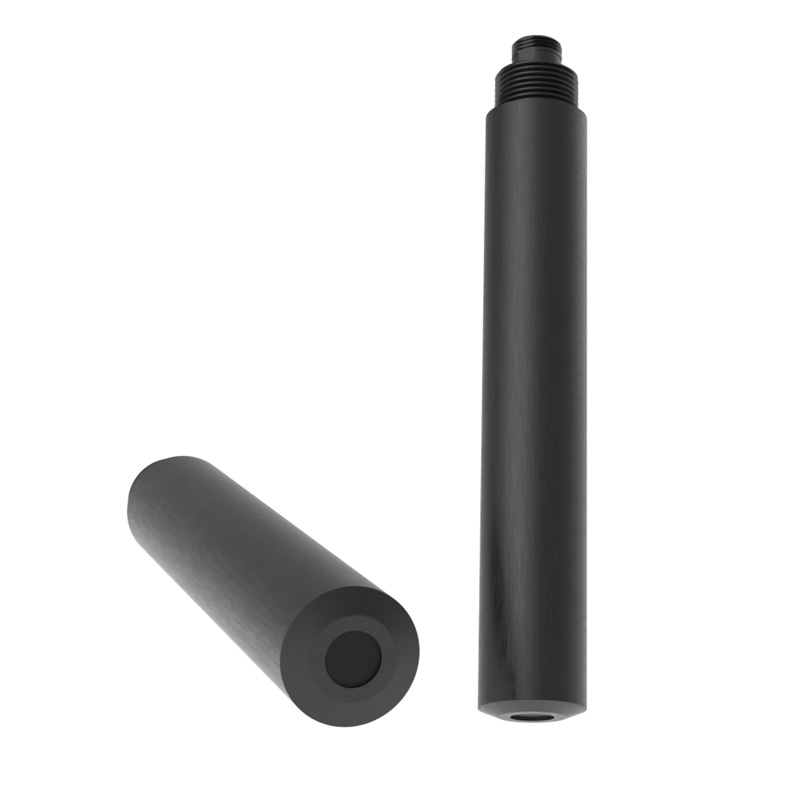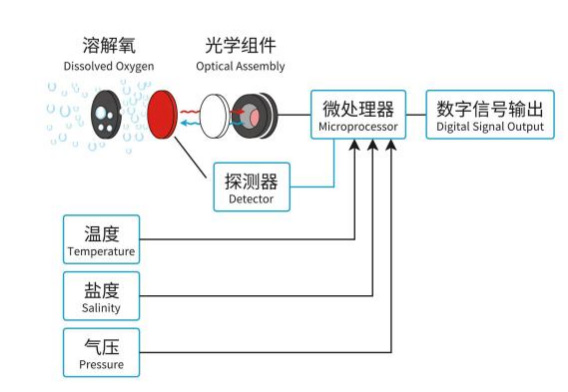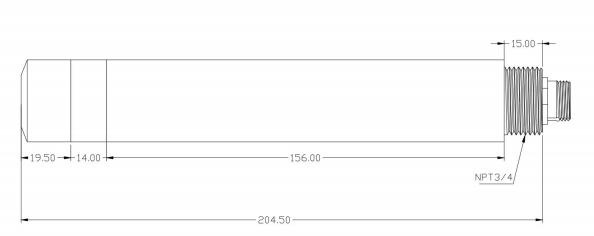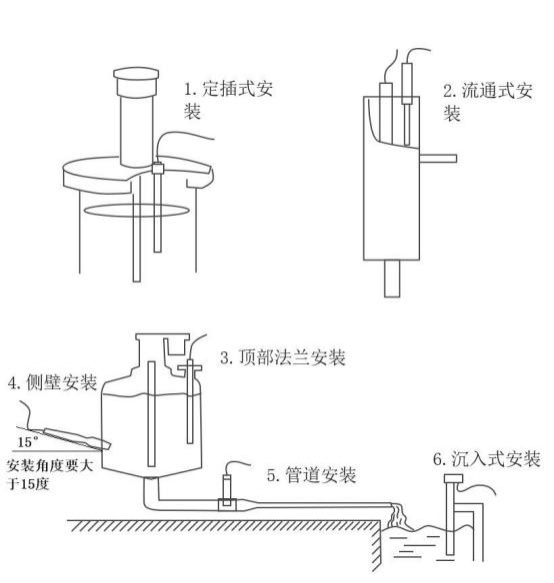Shandong Fengtu IOT Technology Co., Ltd
Sales Manager:Ms. Emily Wang
Cel,Whatsapp,Wechat:+86 15898932201
Email:info@fengtutec.com
Add:No. 155 Optoelectronic Industry Accelerator, Gaoxin District, Weifang, Shandong, China

Sales Manager:Ms. Emily Wang
Cel,Whatsapp,Wechat:+86 15898932201
Email:info@fengtutec.com
Add:No. 155 Optoelectronic Industry Accelerator, Gaoxin District, Weifang, Shandong, China

Model:FT-S8
Brand:fengtu
1.Working principle of Dissolved Oxygen Sensor
The fluorescence dissolved oxygen sensor is designed based on the principle of quenching of excited fluorescence by specific substances in physics. When the excitation light shines on the fluorescent substance on the surface of the fluorescent membrane head, the fluorescent substance is excited and emits fluorescence. The extinguishing time of the fluorescence is affected by the concentration of oxygen molecules on the surface of the fluorescent membrane head. The concentration of oxygen molecules can be calculated by detecting the luminous lifetime of the fluorescence, and the final value can be output after temperature, air pressure and salinity compensation.

2. Dissolved oxygen sensor technical parameters
| Measuring principle | Fluorescence lifetime method |
| Measuring range | 0-20mg/L |
| Resolution | 0.01mg/L |
| Accuracy | ±2%, ±0.3℃ |
| Temperature compensation | Automatic temperature compensation |
| output method | RS-485 (Modbus/RTU), 4-20mA |
| storage temperature | -5~+65℃ |
| working environment | 0-50℃ , <0.3MPa |
| Installation | Immersion installation, 3/4NPT mounting thread |
| Cable length | 5m |
| Power consumption | 0.2W, 12V power supply |
| powered by | DC: 12V-24V |
| Protection level | IP68 |
| Calibration method | Two-point calibration |
3. Dissolved oxygen sensor size/installation
1. Dissolved oxygen sensor dimensions

2. Dissolved oxygen sensor wiring diagram
The cable is a 4-core shielded cable:
Red line - power line
Blue wire—ground wire (GND) Green wire—485B
Yellow line—485A
The cable color may vary slightly due to different production batches. Please refer to the cable silk screen for details.
3.Dissolved oxygen sensor installation

Before powering on, the wiring sequence should be carefully checked to avoid unnecessary losses due to wiring errors, and the wiring points should be waterproofed.
4. Dissolved oxygen sensor maintenance and care
1) Sensor outer surface: Rinse the outer surface of the sensor with clean water. If there is still dirt remaining, wipe it with a damp soft cloth. For some stubborn dirt, you can add some household detergent to the water to clean it.
2) Fluorescent membrane head surface: If there is dirt on the surface of the fluorescent membrane head, please rinse it with clean water or wipe it gently with a soft cloth. When cleaning, pay attention to the strength to avoid scratching the measuring area and affecting the measurement accuracy.
3) If the measured value is too high or too low, clean the fluorescent membrane head and stir the membrane head during measurement to prevent foreign objects from adhering to the membrane head surface.
5. Dissolved oxygen sensor calibration
5.1 Zero point calibration
Add 5g of sodium sulfite to 95mL of water and stir evenly. Place the sensor in the solution. After the value stabilizes for 3 minutes, perform zero calibration according to the communication instructions.
5.2 Slope Calibration
Place the sensor in air-saturated water, wait for about 3 minutes for the value to stabilize, then perform slope calibration, and perform zero calibration according to the communication instructions.
5.3 Notes
Avoid exposing the inner surface of the fluorescent film to sunlight or strong light. Do not touch the fluorescent film with your hands or sharp objects.
Avoid bubbles adhering to the surface of the fluorescent film during use
The Small automatic weather station can collect meteorological data in real time, which is crucial for meteorological research and disaster prevention. Now, let's introduce its installation method to you.Preparation before InstallationFirst of all, select a suitable site. Choose an open and flat...
scenic weather station is a monitoring facility integrating data acquisition, storage, transmission, and management,It continuously monitors air quality and temperature/humidity to ensure the environmental quality of the scenic area....
Traditional fixed visibility monitoring equipment is limited by factors such as installation location and power supply conditions, making it difficult to meet flexible and variable monitoring needs. The emergence of the Portable Visibility Detector has effectively solved this problem.Low visibility...
Microclimate refers to the special climate formed in the atmosphere of a local area, which is different from the macroclimate, due to differences in underlying surface factors such as surface properties, terrain, and vegetation. Compared with the macroclimate, the microclimate is closer to human pro...